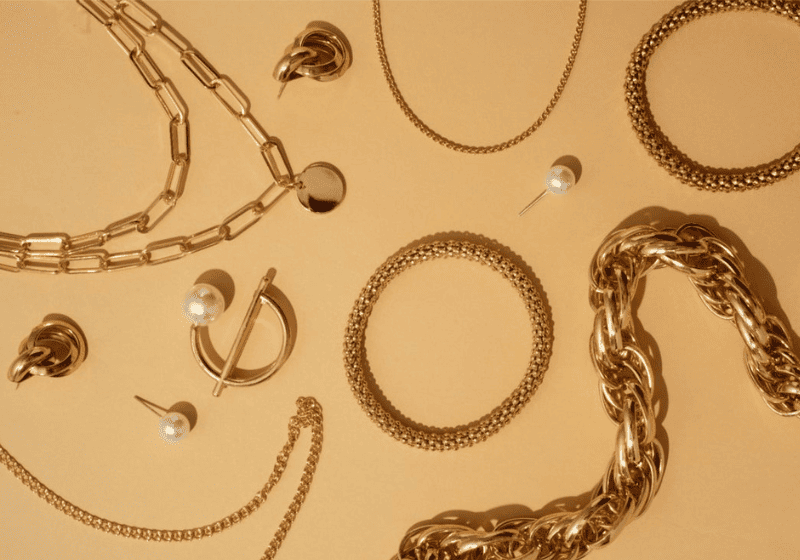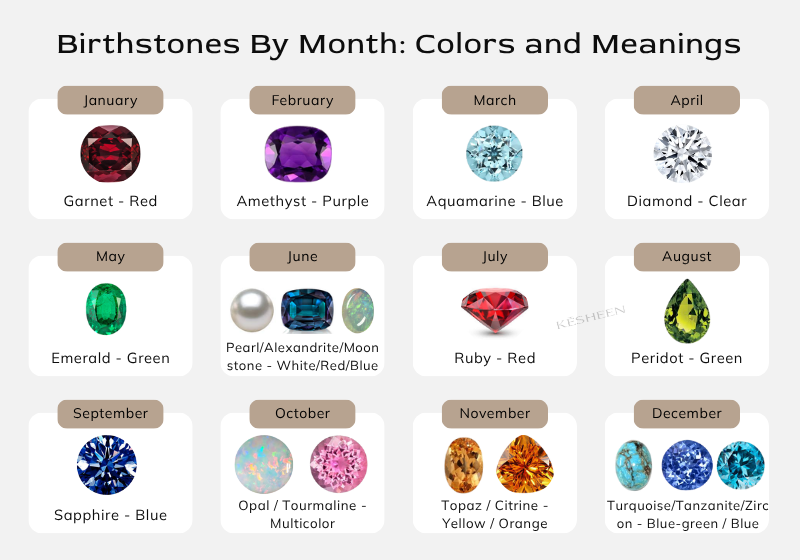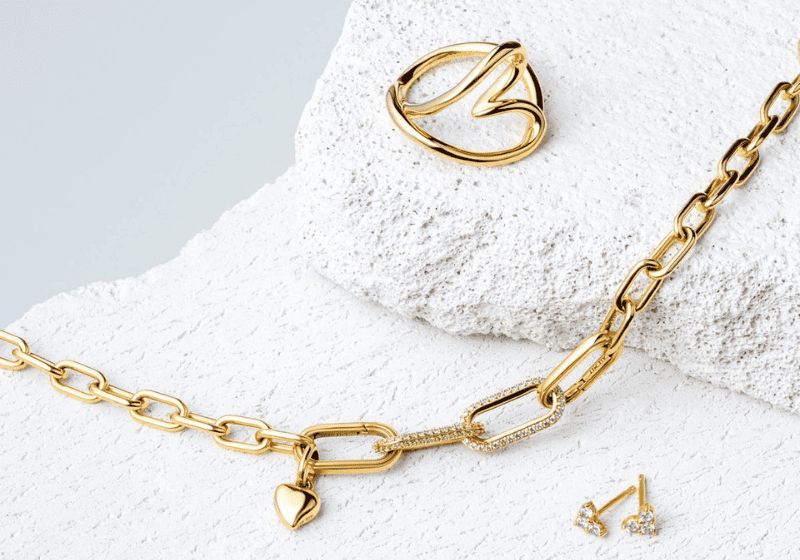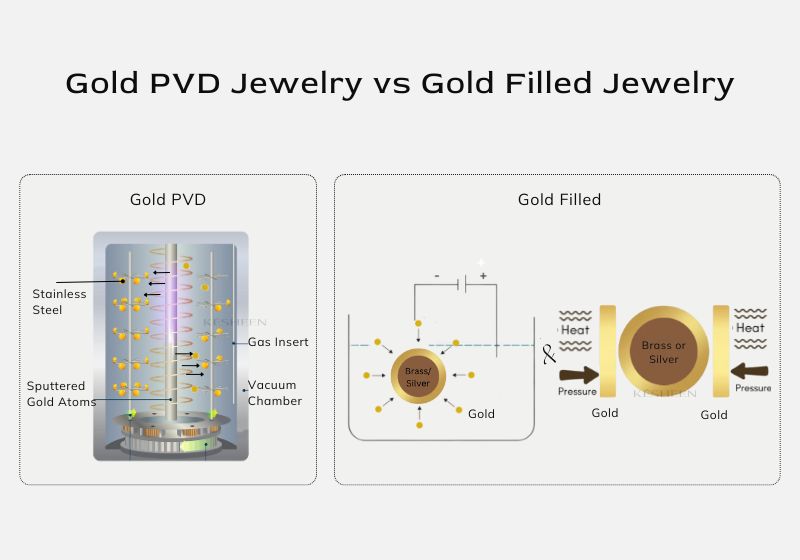Does stainless steel jewelry have nickel? Yes. But contrary to what many people think, even though stainless steel does contain nickel, it can be considered nickel-free as long as its nickel release is within accepted safety limits.
In other words, the presence of nickel in stainless steel doesn’t automatically make it harmful. What truly matters is the amount of nickel it releases.
Join us as we further explain what does nickel-free mean in jewelry and mention the nickel-free jewelry you can trust.
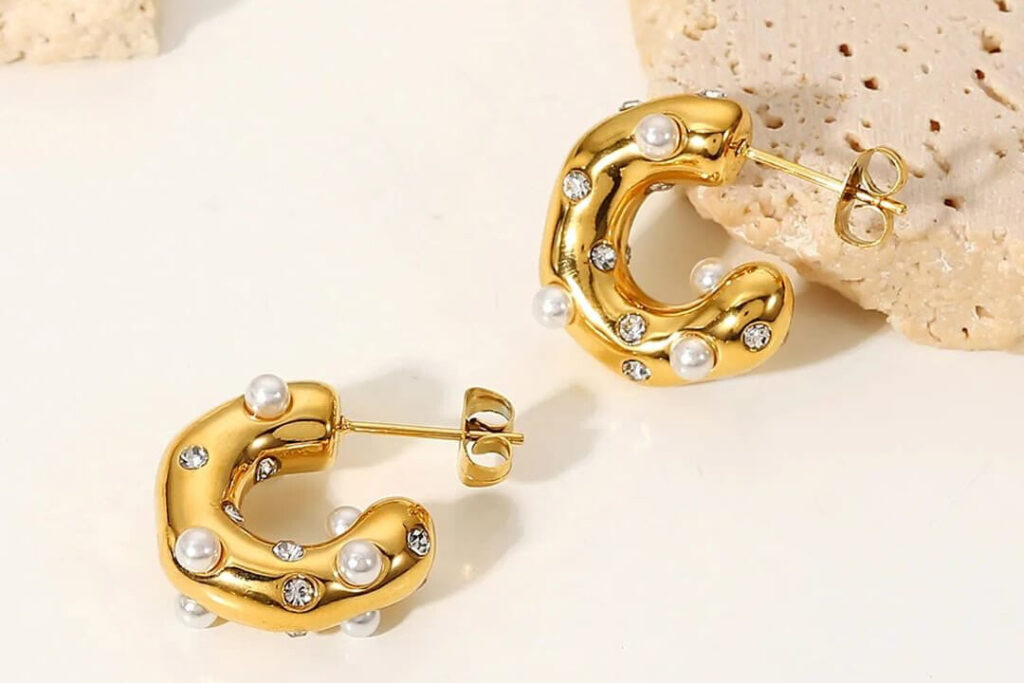
What is Nickel and Why Does It Matter in Jewelry?
Nickel is a slivery-white metal often used when alloying jewelry metals. It is highly rated for its strength and corrosion-resistance, which are key qualities for jewelry longevity.
However, some people are sensitive to nickel, thereby causing skin reactions like redness, itching, or rashes. Approximately 15% of women and 2% of men suffer from NACD (Nickel Allergic Contact Dermatitis). It’s higher in women because they are more exposed to wearing jewelry, even from childhood. Because of this, jewelry brands must comply with the nickel release standards. Doing so protects customers’ health, builds brand trust, and strengthens legal standings.
Does 304 and 316L Stainless Steel Jewelry Contain Nickel?
Yes, both 304 and 316L stainless steel jewelry contain nickel. But the key factor is how much is released, not how much nickel is in stainless steel. As long as its nickel release is within regulations, it does not harm wearers.
- 304 stainless steel jewelry typically contains 8-10.5% nickel. Its approximate release content is below 0.3 µg/cm2/week.
- 316 stainless steel jewelry, on the other hand, contains around 10-14% nickel. Even though it contains higher nickel, it releases below 0.1 µg/cm2/week. This is because it also contains molybdenum, which enhances stability and reduces nickel release.
Is Stainless Steel Jewelry Truly Nickel-Free?
Is stainless steel jewelry nickel-free? By definition, it is not truly nickel-free. But in reality, stainless steel can be considered “nickel-free” or “nickel-safe” if it meets the nickel release standards. The European Union Nickel Directive allows jewelry to be labeled “nickel-free” if it releases less than 0.5 µg/cm²/week of nickel. This means the focus isn’t on nickel content but on nickel release.
316L stainless steel, for example, releases below 0.1 µg/cm²/week. So when asked does 316L stainless steel contain nickel, you can say yes, but highlight that it can be considered nickel free because the nickel release falls within the safe range.
What Jewelry is Considered to be Nickel-Free?
Nickel-free jewelry includes pieces that either contain no nickel at all or release it at levels below safety thresholds. What jewelry is nickel-free? They include:
| Material | Nickel-Free | Hypoallergenic | Best For |
| 304 Stainless Steel | ⚠️ Contains nickel, but nickel release meets standard | ✅ | Cost-effective fashion jewelry, accessories |
| 316L Stainless Steel | ⚠️ Low nickel release, meeting standard | ✅ | Highly sensitive individuals, body jewelry, earrings |
| 925 Sterling Silver | ✅ Usually nickel-free (if alloy without nickel) | ✅ | Fine silver jewelry, timeless collections |
| Higher Karat Gold (18K+) | ✅ Typically nickel-free | ✅ | Luxury jewelry, hypoallergenic premium collections |
Stainless Steel
Wondering—does surgical steel have nickel? 316L stainless steel is also known as surgical steel, a name given to it because of its application in medical scenarios. 304 and 316L stainless steel both contain nickel, but their release level are below the safety limits, making them suitable for piercings and medical implants.
Sterling Silver
Sterling silver is made of 92.5% silver and 7.5% other metals, often copper. While rare, some sterling silver pieces are alloyed with nickel, leading many to ask, “Does sterling silver contain nickel?” High-quality sterling silver usually does not contain nickel.
Higher Karat of Gold
If you’re wondering, “Does gold have nickel in it?” the answer depends on the karat. Pure gold (24K) doesn’t contain nickel. Higher karat gold, such as 14K and 18K, contains more pure gold and fewer alloy metals, which greatly reduces the chance of nickel being present. This makes it hypoallergenic, durable, and safe for sensitive skin.
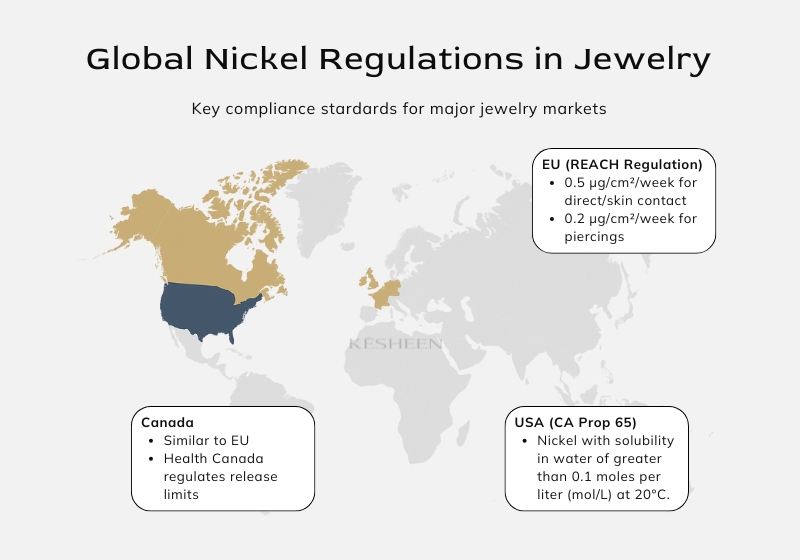
What are the Nickel Regulations for Jewelry?
There are 2 popular regulations guiding nickel release in jewelry. They are:
EU Standards for Nickel Release – REACH
The Nickel Directive of the European Union, which includes the Registration, Evaluation, Authorization, and Restriction of Chemicals (REACH) regulation, controls the amount of dangerous chemicals and heavy metals in consumer products. It stipulates that the maximum nickel release rates are: 0.2 µg/cm²/week for piercings and 0.5 µg/cm²/week for direct or skin contact.
304 and 316L stainless steel typically pass these tests, hence why it’s often recommended for nickel-free jewelry.
US Standards for Nickel Release – California Proposition 65
The U.S. does not have a statutory law on nickel release, leading some brands to voluntarily follow EU standards. But the California Proposition 65 lists nickel as a carcinogen, limiting nickel with solubility in water of greater than 0.1 moles per liter (mol/L) at 200C.
316L vs. 304 Stainless Steel: Which Has Lower Nickel and is Safer for Jewelry?
| Feature | 316L (Surgical Grade) | 304 (Food Grade) |
| Molybdenum Content | Yes (2-3%) | No |
| Corrosion Resistance | Excellent | Very Good |
| Nickel Release | Very Low | Low, but higher than 316L |
| Common Use | Body jewelry, medical implants, highly sensitive skin | Cost-effective fashion jewelry, kitchenware |
With a careful examination of the pros and cons of stainless steel jewelry, you will realize that while 304 stainless steel contains less nickel, it releases more than 316L. This is because 316L contains molybdenum, which enhances corrosion resistance and reduces nickel release.
In short, 304 stainless steel is cost-effective but more likely to cause irritation in very sensitive individuals. 316L surgical steel is a nickel-free stainless steel jewelry and is best for people with highly sensitive skin.
What Types of Brands Should Highly Focus on Nickel-Free Jewelry?
Some types of jewelry require special attention to nickel release because of prolonged wear and skin sensitivity. Thus, if you’re a brand selling children jewelry, body piercings, and earrings, ensure they are nickel-free.
Children’s Jewelry Lines
Children’s skin is highly sensitive, making nickel exposure risky. Jewelry brands targeting kids should only sell pieces made with nickel-free and durable metals like surgical steel or gold to create a protective surface and enhance wear resistance.
Body Piercing Shops
Body piercing shops must prioritize nickel-free metals for jewelry because fresh piercings involve open skin that easily absorbs anything. Even trace amounts of nickel can cause irritation, infections, or allergic reactions. Using surgical-grade metals like 316L guarantees more safety.
Earrings Stores
Earrings are worn for long hours on the earlobes, which is a very sensitive skin. Stores specializing in earrings should choose nickel-free metals like 316L surgical steel or low-nickel alloys with protective coatings like PVD coating jewelry. These finishes not only minimize allergic risks but also improve the durability, color retention, and shine.
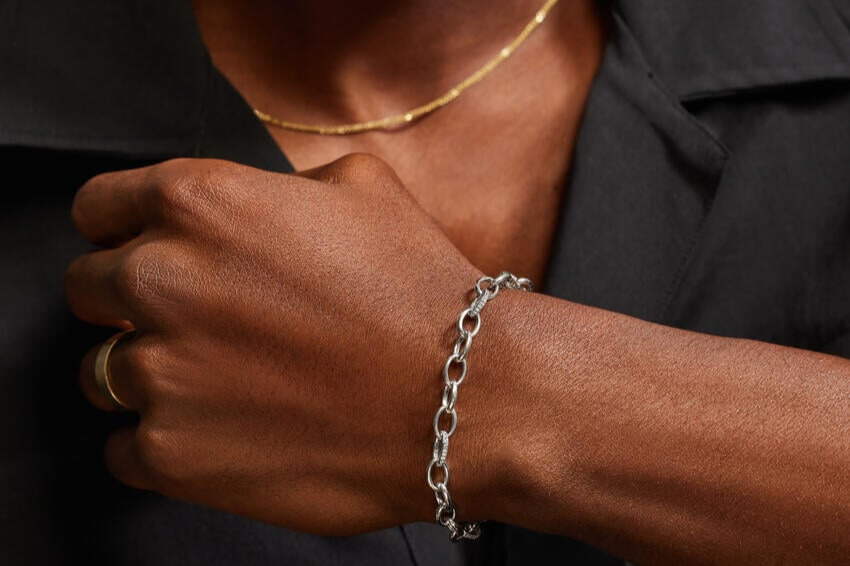
How to Tell If Jewelry is Nickel-Free?
Here are some proven ways to detect if a jewelry is nickel-free:
Look for Labels Like “Nickel-Free”
Start by checking the jewelry’s descriptions and material information provided by the seller. Look for terms like “316L,” “surgical stainless steel,” “nickel-safe,” “nickel-free,” or “surgical steel” to verify safety. However, these labels aren’t always required, so it’s best to confirm the actual material composition when possible.
Nickel Release Lab Test
This procedure measures how much nickel is released from the jewelry into a testing solution, thereby simulating how it would interact with the human body. At Kesheen, our comprehensive quality control involves a strict nickel release lab test, compliance with the REACH regulation, and certifications to prove 100% authenticity.
Does Nickel-Free Mean Hypoallergenic?
Nickel-free does not necessarily mean hypoallergenic. When a jewelry is termed “nickel-free,” it simply means the jewelry complies with the nickel release standard set for skin sensitivity.
Hypoallergenic, on the other hand, means the jewelry is less likely to cause reactions. This doesn’t mean the jewelry is nickel-free. If you’re wondering, Is stainless steel jewelry hypoallergenic? The answer is yes, certain grades like 304 and 316L are hypoallergenic because they release extremely low levels of nickel.
Does Nickel-Free Jewelry Tarnish?
Yes, some nickel-free jewelry tarnish. It’s important you know that tarnishing has nothing to do with nickel in jewelry. Rather, tarnishing happens when low-quality metals like brass and copper are used, and the jewelry is constantly exposed to moisture or oxidation.
Wondering what jewelry does not tarnish? Stainless steel and higher karat gold are the best. Sterling silver is also good, but it will tarnish without proper plating.
Does Nickel-Free Jewelry Turn Green?
No, nickel-free jewelry rarely turns green because it’s made without reactive metals like copper or brass, which are the main causes of skin discoloration. Materials such as stainless steel, sterling silver, and high-karat gold maintain their color and shine over time, making them safe and comfortable for sensitive skin.
Conclusion
Nickel poses a lot of threat to people with sensitive skin, but when you choose top nickel-free jewelry like 304 and 316L stainless steel, you are safe from possible allergic reactions. These stainless steel metals are nickel-safe and ideal for brands targeting sensitive-skin markets.
Partner with a reputable custom jewelry manufacturer like Kesheen to get quality pieces that are suitable for even the most sensitive individuals.
FAQs
Nickel in stainless steel is generally safe. In high-quality grades like 316L, nickel is tightly bound in the alloy and released at extremely low levels, far below safety limits, making it non-toxic for most people.
Surgical steel, or 316L stainless steel, is not completely nickel-free by definition. However, the nickel content is minimal and its release is below safety thresholds, making it safe and suitable for sensitive skin and medical applications.
Yes, stainless steel, especially 316L surgical steel, is ideal for sensitive skin. Its low nickel release and corrosion resistance reduce irritation, making it safe for piercings and long-term wear.
